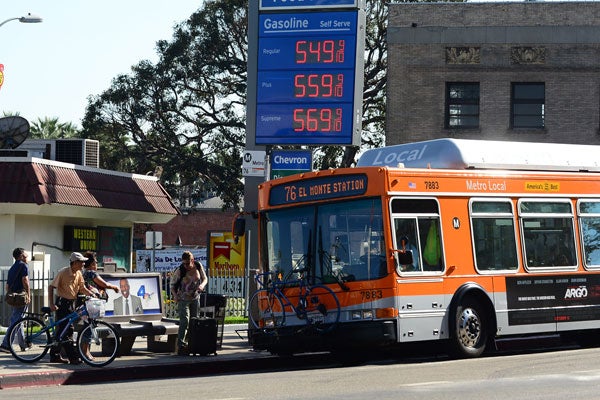
California’s nation-high gas prices are receiving national attention. The price of $4.67 per gallon, an increase of about 50 cents in the past week, is 86 cents higher than the national average.
Representative Henry Waxman (D–CA) and Senator Barbara Boxer (D–CA) are quick to speculate about market manipulation and are calling for the Federal Trade Commission (FTC) to investigate the price spike. But markets are working, not manipulating. Several factors are contributing to higher prices in the Golden State, including supply disruptions, tight markets, and government-driven factors such as high state taxes and stringent boutique fuel requirements.
The 50-cent jump in prices is not a result of market manipulation but tight markets. If oil companies and refiners could price gouge and manipulate the market, why wouldn’t they do it all the time?
Yet, as indicated by the letter Waxman sent to the FTC, constraints in supply are a large reason gas prices in California are high. A fire at a Chevron refinery near San Francisco led to decreased production, and the Kettleman–Los Medanos pipeline, which carries 85,000 barrels per day to California, has been shut down since the middle of September because of chloride contamination. More recently, a power outage at ExxonMobil’s refinery in Los Angeles further tightened supply and has just come back online October 5.
California’s fuel blend requirements to meet the state’s air quality standards are undoubtedly a contributor to higher prices for a few reasons. The summer blend, which aims to reduce components of smog when fuel evaporates more quickly in warmer weather, is more expensive to make. The blend requirement fragments the market so when supply disruptions do occur, other refineries are not equipped to make up for that loss. On October 7, Governor Jerry Brown (D) and the California Air Resources Board allowed for cheaper and more abundant winter fuel blends to be refined—a few weeks ahead of the normal switchover.
State gas taxes and fees, while not playing a part in driving up the price in recent weeks, are a reason why California typically experiences prices higher than the national average. According to the American Petroleum Institute, the combined state, federal, and local taxes for California is 68.9 cents per gallon—the second highest in the country behind New York and almost 20 cents above the national average.
High gas prices in California stress the need to allow the necessary infrastructure, whether it is more refining capacity or pipelines, to be built in a timely manner so that when there is an interest to build more capacity, there isn’t a huge lag in the time it needs to meet the market.
Further, gaining access to the billions of barrels of oil in the Pacific would create another stable supply of crude for West Coast refineries and increase supply to drive down oil prices. Drilling would also significantly reduce the amount of oil that reaches California’s beaches by naturally seeping from the seabed.
Yet this Administration has failed to unlock the Atlantic and Pacific coasts, as well as the Eastern Gulf of Mexico and areas off of Alaska’s coast. As a result, a meager 15 percent of America’s territorial waters are available for oil and gas exploration. The Minerals Management Service estimates that 101 billion barrels of oil and 480 trillion cubic feet of natural gas of proven reserves and undiscovered resources are awaiting exploration in the Outer Continental Shelf.
Opening these areas would generate hundreds of thousands of new jobs, generate hundreds of billions of dollars in government revenue, and bring more oil to the world market, thereby lowering gas prices.